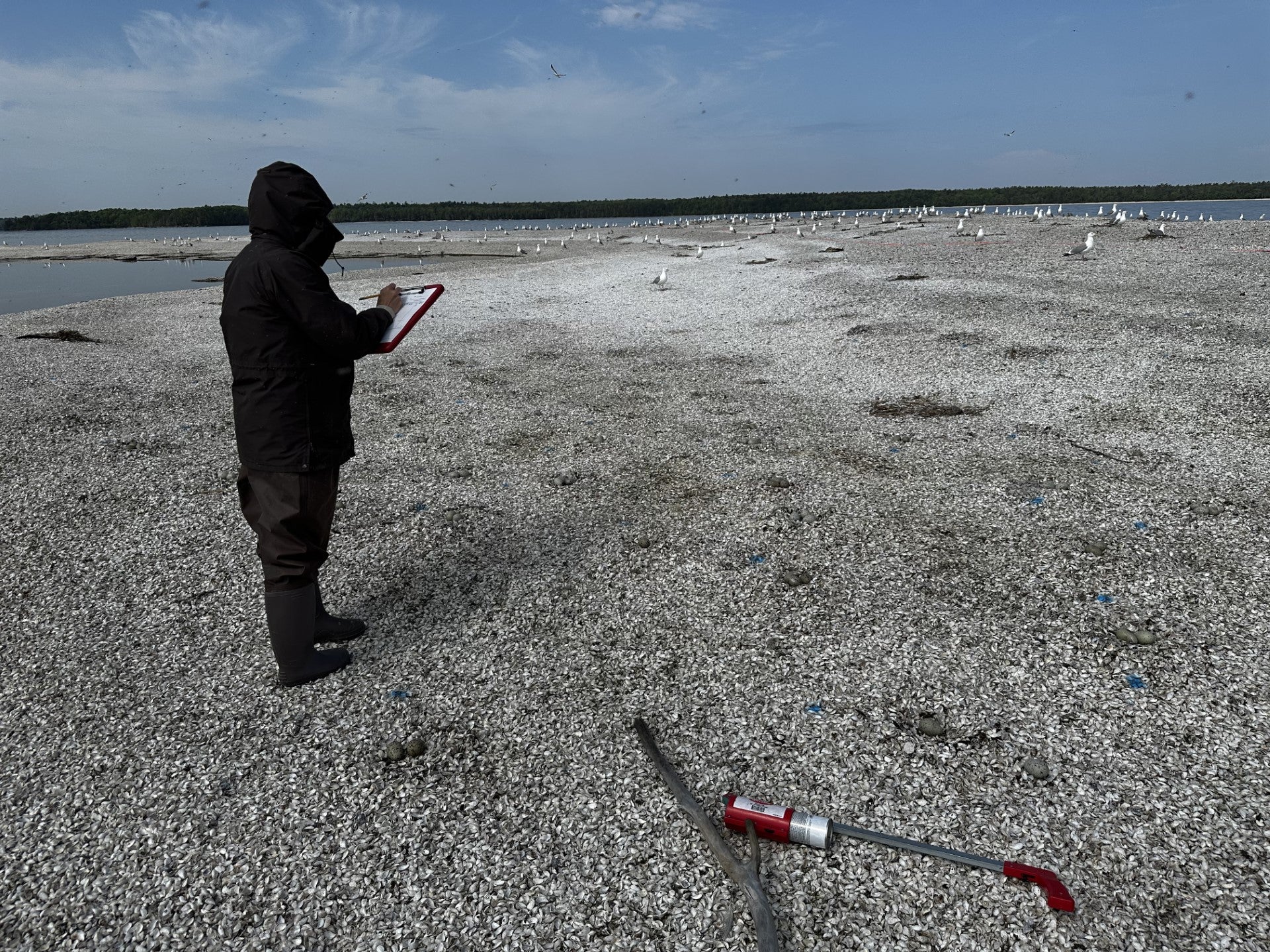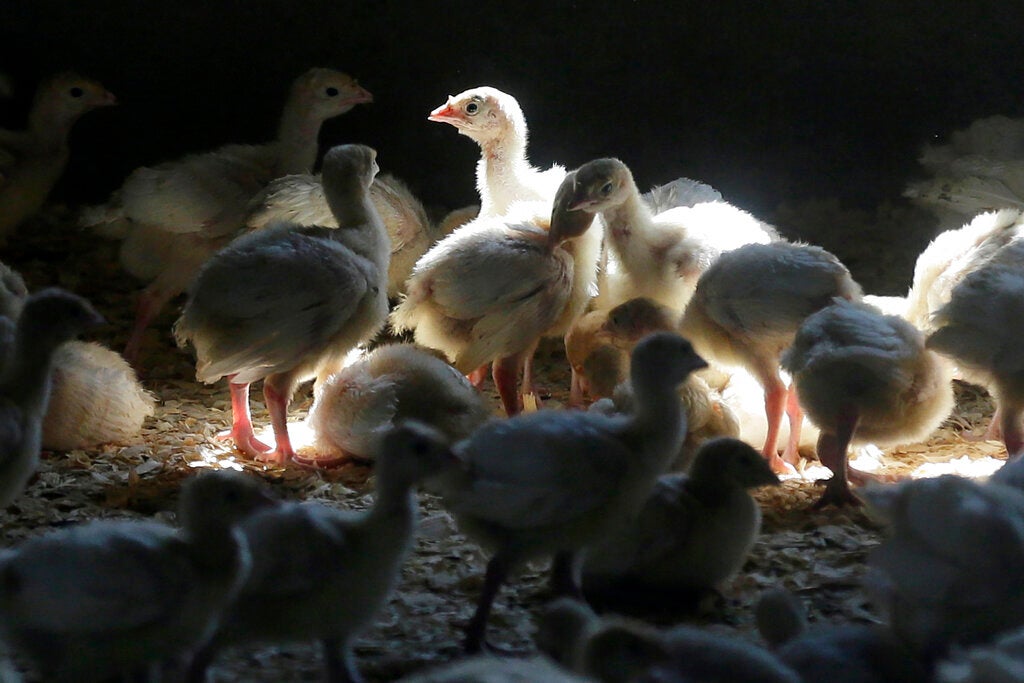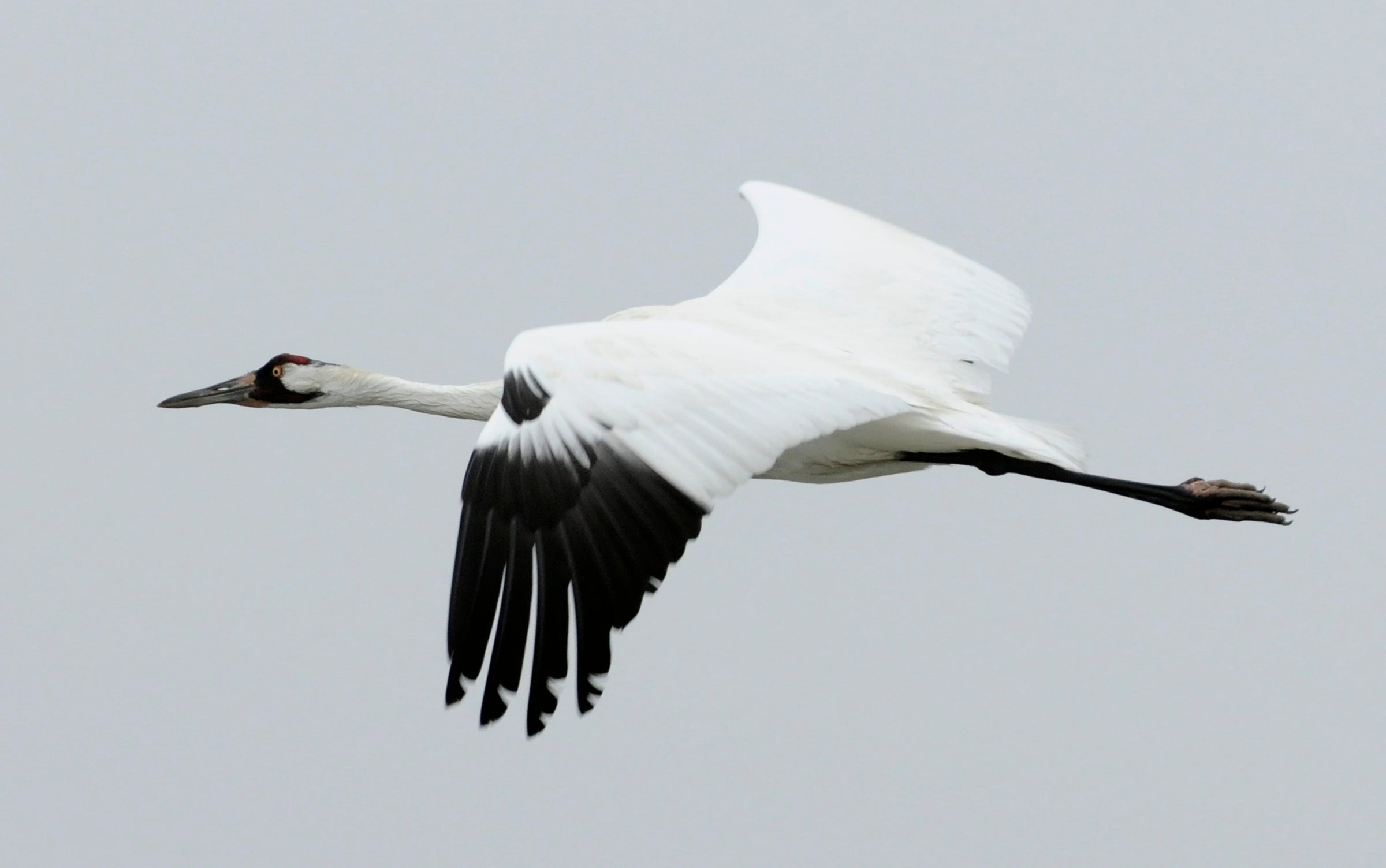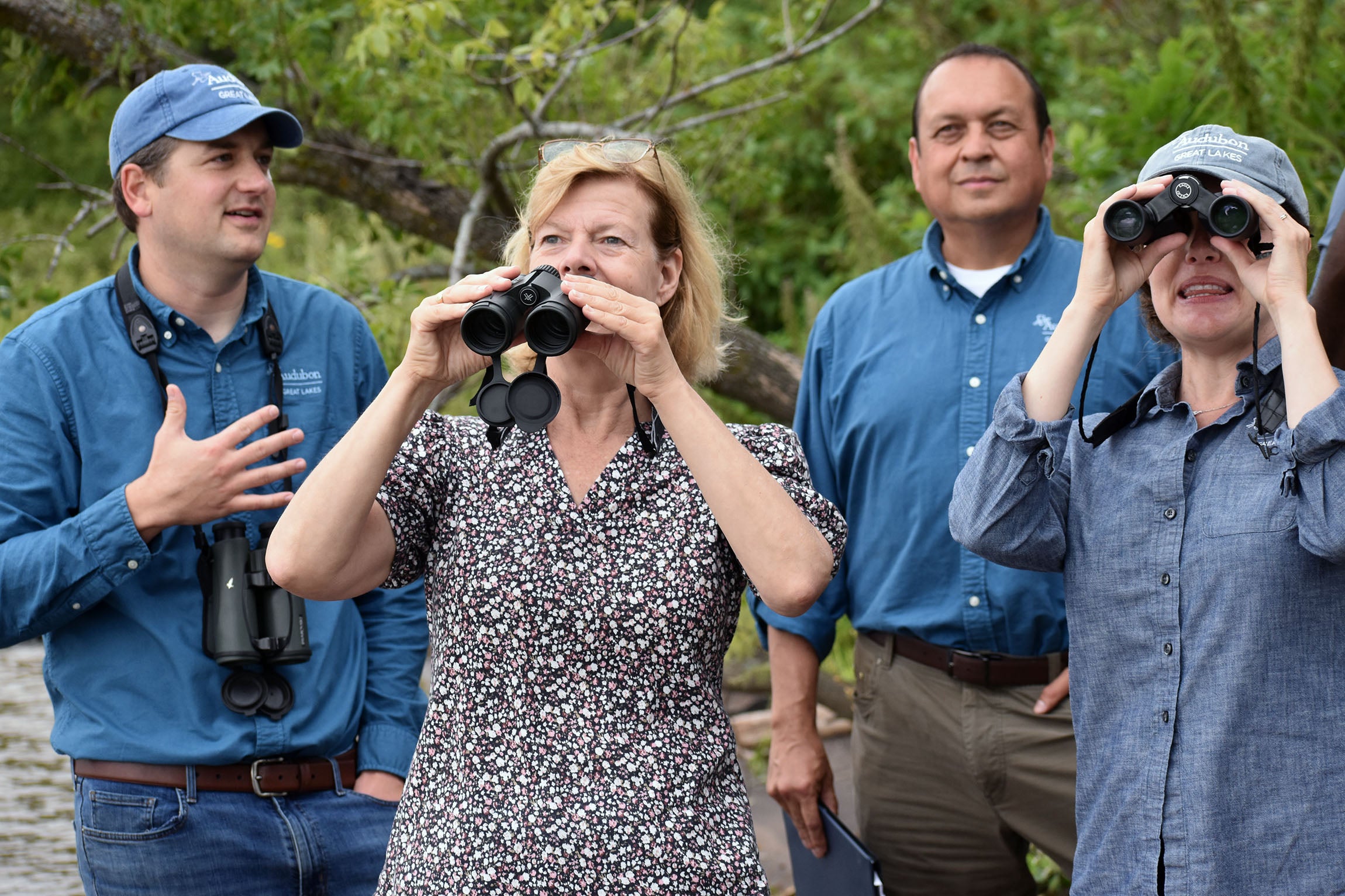A state avian ecologist says a highly contagious bird flu that hit Wisconsin last year may have been the most deadly avian flu outbreak ever for wild birds in the Midwest.
Last year, highly pathogenic avian influenza killed almost two-thirds of the state’s breeding population of Caspian terns. The white gull-sized tern with a black cap and coral-red bill is a state endangered bird. It’s only found at three sites in Wisconsin: Hat Island and Gravel Island off the coast of the Door County peninsula, as well as the Cat Island Chain in lower Green Bay.
Sumner Matteson, a state avian ecologist with the Wisconsin Department of Natural Resources, said last year researchers followed pairs of terns on 960 nests at three sites in the state, a total of 1,920 birds. Sixty-four percent of them died of the virus.
News with a little more humanity
WPR’s “Wisconsin Today” newsletter keeps you connected to the state you love without feeling overwhelmed. No paywall. No agenda. No corporate filter.
It was the most devastating experience he’s ever had in more than 40 years in the field, he said.
“Seeing not only the dead birds in white lines basically on the gravel and cobble beaches, but to see the scores of dying birds that you could do absolutely nothing about,” Matteson said.
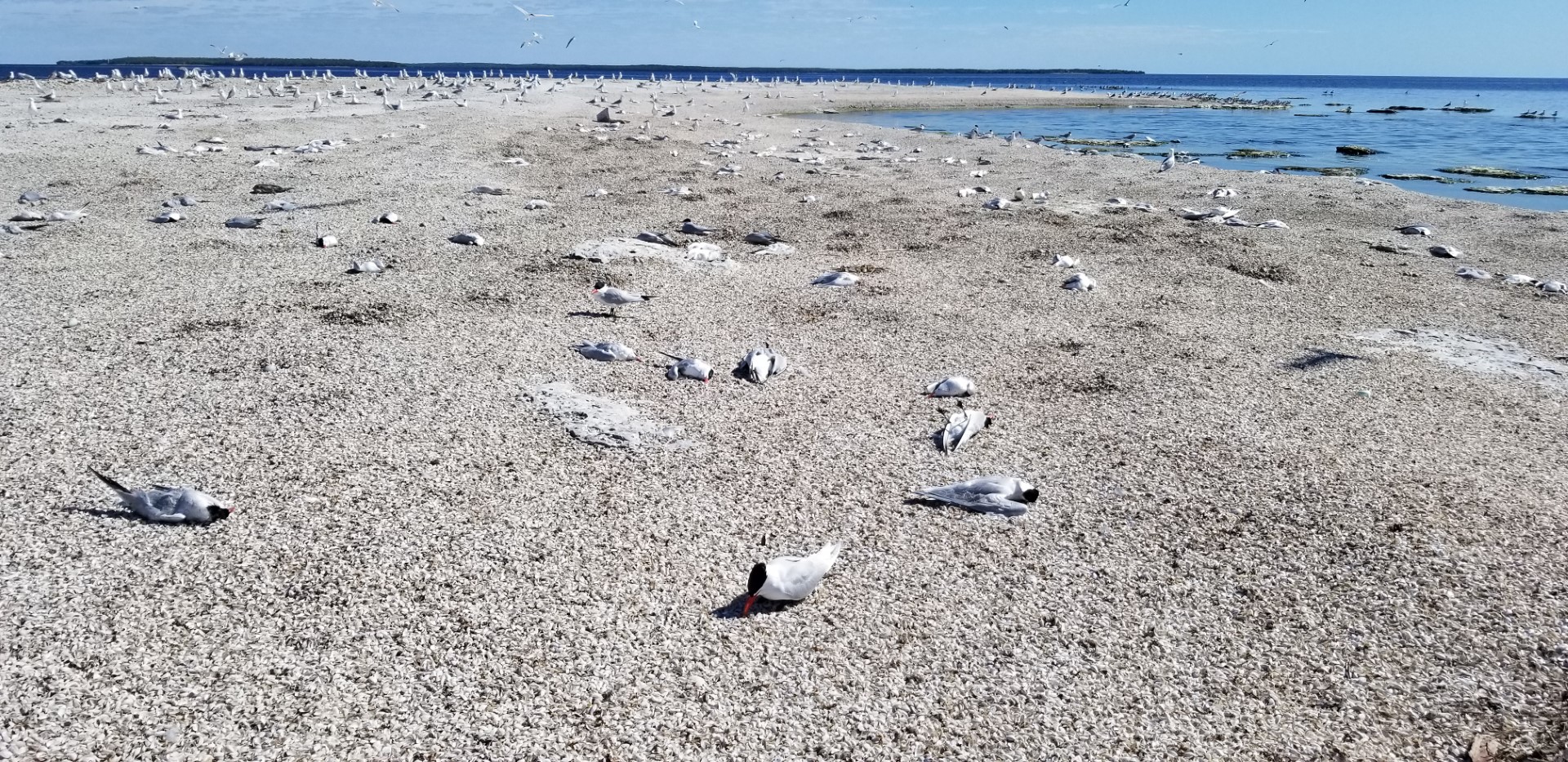
Photo courtesy of Sumner Matteson
Matteson said the good news is they’ve found no sign of sick or dead birds so far this year. A survey last week found no Caspian terns on Hat Island and 129 nests on Gravel Island, which is just offshore from Newport State Park in Door County. Matteson said he expects another DNR staff member will survey the Cat Island Chain this week, which didn’t lose any birds last year.
He added it will likely take years, if not decades, for the state’s Caspian tern population to recover. Based on what he’s seen, the highly contagious bird flu is not a problem this year.
“I would say we were most joyous…over the fact that we did not see any of it in our tern colonies,” Matteson said. “Because had we seen it again, it might have meant the possible extirpation of Caspian terns from Wisconsin.”
Matteson said the bird is an indicator species that’s sensitive to changes in the environment. He said Caspian terns are especially vulnerable to the disease because they tend to mingle more with colonies of water birds like cormorants and pelicans when they migrate to the Gulf Coast.
In Wisconsin, the disease has been detected in many wild birds that include Caspian terns, geese, swans, mallards, sandhill cranes and bald eagles.
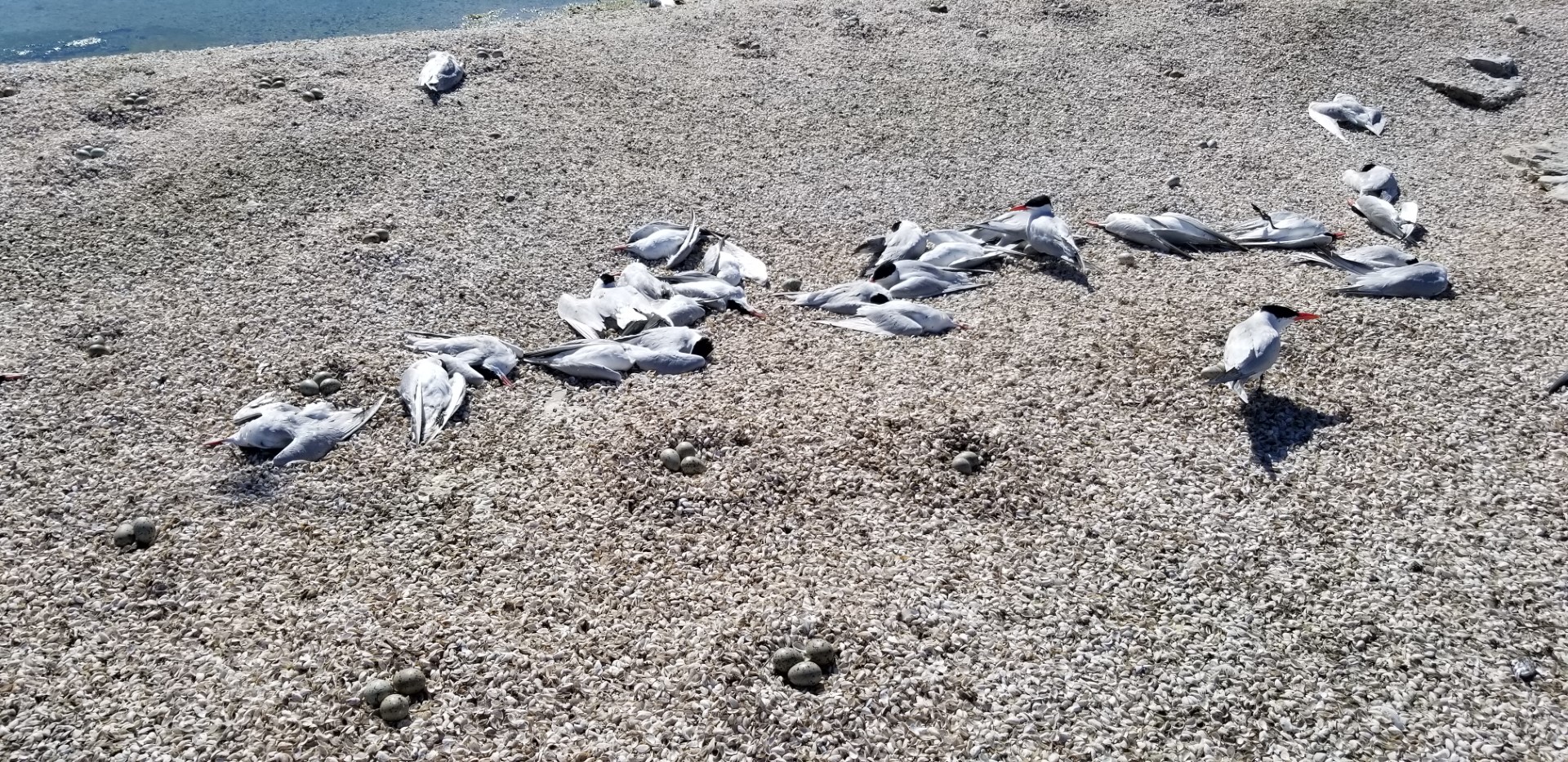
Photo courtesy of Sumner Matteson
Volunteer monitoring of eagle nests across Wisconsin showed chicks didn’t survive to the fledgling stage in two-thirds of nests tracked by the Bald Eagle Nest Watch program. Staff with Madison Audubon, which runs the program, suspect the virus is likely to blame. But there’s reason for hope as volunteers have seen higher survival rates this year.
Last year, the program noted roughly 35 percent of 109 nests saw an eaglet reach the fledgling stage where they’re able to take flight.
Brenna Marsicek, communications and outreach director for Madison Audubon, said the 65 percent failure rate was much higher than previous years — in a typical year an average of 15 percent of nests fail. While they can’t be certain, staff believe the bird flu outbreak played a major role as birds migrated back to Wisconsin during the spring.
“Our hypothesis is that…the adult eagles were accidentally bringing infected prey into the nest, and the chicks didn’t have a large enough body mass to be able to metabolize the infected prey,” Marsicek said. “The chicks likely died as a result of it.”
Marsicek said eagles will prey on just about anything, including fish and waterfowl that may be infected with the virus. Despite that, she said monitoring by volunteers found about 85 percent of 101 nests where adults laid eggs had at least one chick this year.
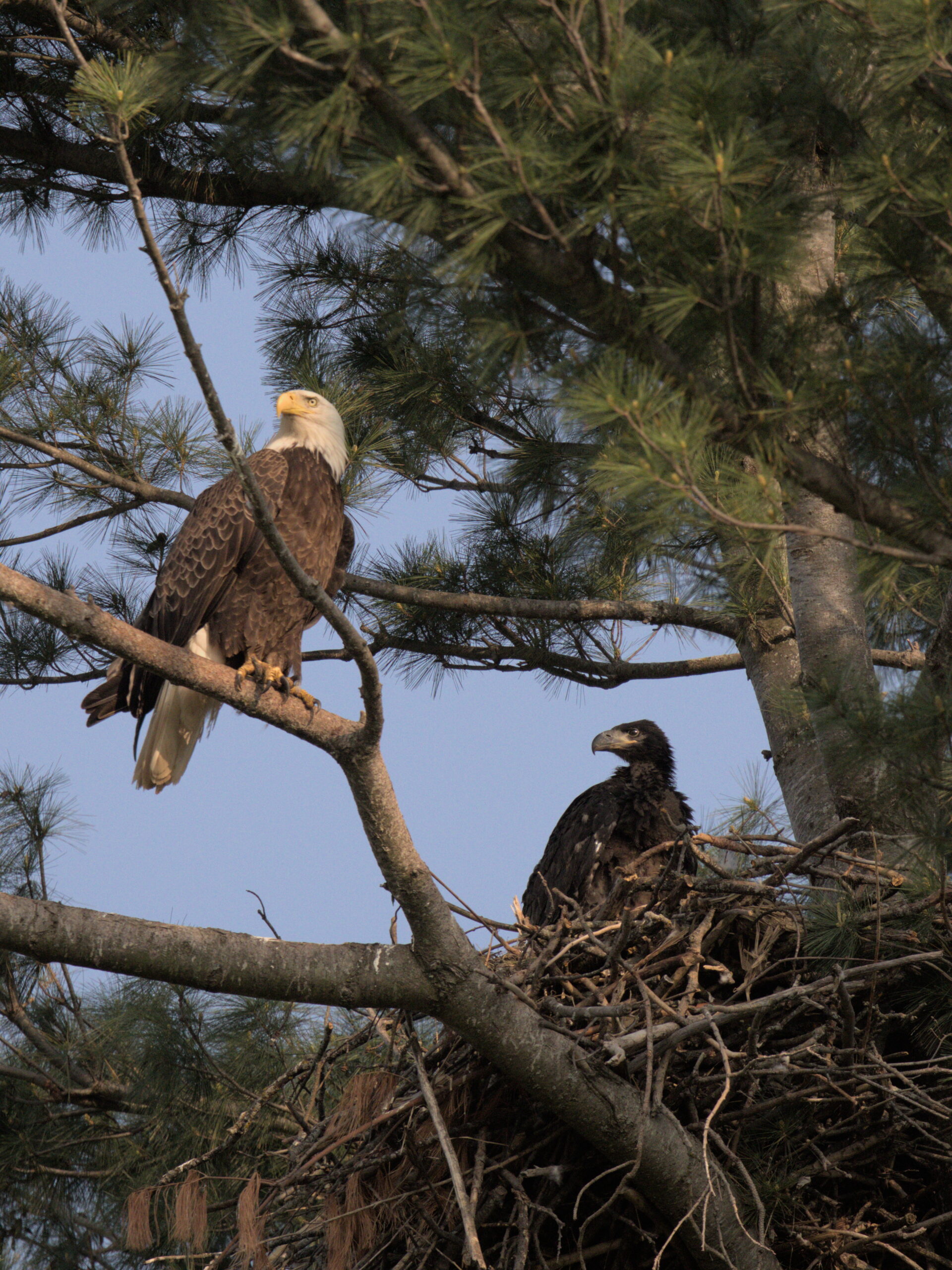
Photo by Scott Emerson
“Fortunately, Wisconsin’s eagle population is strong enough that they could weather a year like last year and come back and have a normal nesting year this year,” Marsicek said.
The program, which started in 2018, has grown to include six areas where a network of 435 volunteers monitor bald eagle nests. They include the Eau Claire, Fox Valley and Manitowoc areas, as well as Door County and central and southern Wisconsin. Marsicek said they don’t represent all nests in the state by any means, but it provides one dataset from citizen monitoring.
While wild birds were affected by the disease, much of the response was focused on domestic poultry. The outbreak of highly pathogenic avian influenza infected 29 flocks in Wisconsin last year among both commercial poultry owners and small backyard flocks in 18 counties, according to state data. Nearly 3.3 million birds were killed in Wisconsin and almost 58.8 million birds nationwide to prevent the spread of the virus.
The U.S. Department of Agriculture announced the first detection of highly pathogenic avian influenza among wild birds in January last year and commercial flocks a month later. The Associated Press reported it had cost the federal government at least $661 million earlier this year, making it less costly than the 2015 outbreak that ran nearly $1 billion.
The outbreak was the main cause egg prices spiked to an average of almost $5 for a dozen eggs in January, but federal data shows prices have since dropped to an average of $3.27 for a carton. That’s the lowest price since last September.
Wisconsin Public Radio, © Copyright 2025, Board of Regents of the University of Wisconsin System and Wisconsin Educational Communications Board.

